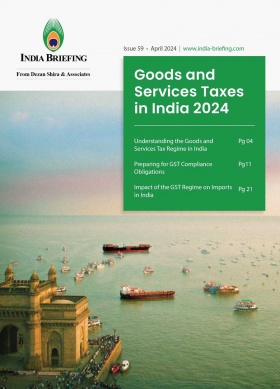India’s Upcoming Subsea Cable Projects Set to Launch between October 2024 and March 2025
India’s digital landscape is poised for a transformative leap, as three major subsea cable systems are set to launch between October 2024 and March 2025. These fiber-optic cables, laid on the ocean floor, serve as the backbone of the global internet, facilitating most international communications.
With the launch of three new subsea cable projects, India is bracing itself for a major leap in digital connectivity development. In August 2024, it was reported that the projects—2Africa Pearls, India-Asia-Express (IAX), and India-Europe-Express (IEX)—are expected to quadruple India’s internet capacity, significantly improving the speed and reliability of its digital connectivity.
While 2Africa subsea cable is expected to go live in October 2024, IAX and IEX are expected to be operational by March next year. Given India’s growing dependence on digital connectivity, submarine cables have become indispensable for its international communications. The country is connected globally through multiple submarine cable systems, such as the Southeast Asia-Middle East-Western Europe (SEA-ME-WE) system, the Bay of Bengal Gateway (BBG) system, and the India-Middle East-Western Europe (IMEWE) system.
A subsea or submarine cable is a fiber-optic cable laid in the ocean, connecting two or more landing points.
Upcoming subsea cable project details
The 2Africa Pearls, among the world’s longest subsea cable systems at over 45,000 kilometers, will connect 33 countries across Africa, the Middle East, and Asia, with Bharti Airtel and Meta among its key investors. This network will have a data transmission capacity of 180 terabits per second (Tbps), with Mumbai serving as a major hub.
|
Submarine telecommunication cable project |
Length (in kilometers) |
Cable ownership |
Connecting |
|
2Africa |
45,000 |
Meta Platforms China Mobile MTN Group Orange S.A. Saudi Telecom Company Vodafone Group Plc West Indian Ocean Cable Company |
Africa, Europe, Middle East, and Asia |
|
India-Asia-Xpress (IAX) |
16,000 |
Reliance Jio Infocomm |
Mumbai, Singapore, Malaysia, Thailand and Sri Lanka |
|
India-Europe-Xpress (IEX) |
9,755 |
China Mobile Reliance Jio Infocomm |
Mumbai to Persian Gulf and Europe |
Source: ToI, Submarine Cable Network
In December 2022, it was announced that India’s telecom company Bharti Airtel is partnering with Meta to land the 2Africa cable in the telco’s Cable Landing Station (CLS) in Mumbai. The domestic telecom player added that it will also pick up the dedicated capacity to ‘further strengthen its submarine network portfolio’.
Meanwhile, India’s Reliance Jio, another national telecom service provider, is supporting the IAX and IEX cables, which will contribute more than 200 Tbps each to India’s connectivity. The IAX cable will link Mumbai with Southeast Asian cities like Singapore and Kuala Lumpur over 16,000 km, while the IEX will connect India to Europe through a 9,775 km route.
As per expert assessment, it is believed that the integration of these three projects will greatly increase internet capacity and improve the quality of services for applications like 5G video streaming, the Internet of Things, artificial intelligence (AI), and cloud computing. This enhancement is likely to draw significant investments from data center operators. The new projects, coupled with India’s existing cable projects, can create an interconnected backbone for international data traffic, bolstering these transport routes between Asia and the rest of the world in the coming years.
Prospects of India’s subsea cable connectivity
India’s strategic location in the Indian Ocean has made it a key player in the expansion of submarine cable infrastructure. In August 2020, India completed the installation of a 2,312 km submarine optical fiber cable connecting Chennai to the Andaman and Nicobar Islands. This move has enhanced India’s strategic presence in the Indo-Pacific region and represents a significant step towards becoming a cyber superpower. In February 2023, NTT Global Data Centers announced the landing of its MIST (Malaysia, India, Singapore, Thailand) subsea cable system in Mumbai and Chennai, with stations built in both cities. The MIST cable can transmit data at over 200 Tbps.
India’s digital economy has seen sharp growth in recent years, contributing significantly to the country’s economic expansion. According to an industry report, there were 751.5 million internet users in India at the start of 2024, when internet penetration stood at 52.4 percent. Per data from the Telecom Regulatory Authority of India (TRAI), from March 2023 to March 2024, the total number of internet subscribers in India grew by 8.3 percent, increasing from 881.25 million to 954.4 million.
The digitization of key sectors like finance, agriculture, retail, e-commerce, logistics, and transportation offers vast investment and commercial opportunities across India.
Regulatory framework and subsea cable expansion
Under India’s current telecom licensing framework, TRAI is responsible for setting orders, regulations, and directives for the telecommunications sector, while the Department of Telecommunications (DoT), Ministry of Communications issues the licenses.
Any company laying submarine cables within Indian Territorial Waters must possess a valid International Long Distance (ILD) license from the DoT. License holders, known as International Long-Distance Operators (ILDOs), are permitted to establish Cable Landing Stations (CLS) for the landing of submarine cables, with regulations set by TRAI.
On June 19, 2023, TRAI introduced recommendations on the ‘Licensing Framework and Regulatory Mechanism for Submarine Cable Landing in India,’ which proposed two categories for CLS locations:
- Main CLS and,
- CLS Points of Presence (CLS-PoPs)
As of the end of 2022, TRAI reported 17 international subsea cables (Seacom and MENA counted separately) landing at 14 distinct cable landing stations across five Indian cities:
- Mumbai, Maharashtra
- Chennai, Tamil Nadu
- Cochin, Kerala
- Tuticorin, Tamil Nadu
- Trivandrum, Kerala
These cables have a total capacity of 138.606 Tbps, with 111.111 Tbps activated.
It may be noted that domestic submarine cables like the Chennai-Andaman and Nicobar Island Cable (CANI) link Port Blair and seven other Andaman & Nicobar Islands, while the Kochi-Lakshadweep Island (KLI) cable system connects Kochi with 11 Lakshadweep islands via a dedicated submarine optical fiber cable.
Key takeaways
India’s digital economy has expanded rapidly in recent years, positioning the country as a global software services hub. The three new subsea cable systems, 2Africa Pearls, IAX, and IEX, are expected to significantly boost India’s internet capacity by 2025, quadrupling its digital connectivity.
Submarine cables are essential for India’s global connectivity, handling most international data transmissions, and are crucial for applications like 5G, AI, and cloud computing.
Key submarine cable projects such as the Chennai-Andaman-Nicobar Island Cable (CANI) and the Kochi-Lakshadweep Island (KLI) system enhance India’s connectivity to remote regions, boosting its strategic and economic footprint in the Indo-Pacific region.
As India’s reliance on global connectivity continues to grow, the importance of submarine cables will only increase in the future.
About Us
India Briefing is one of five regional publications under the Asia Briefing brand. It is supported by Dezan Shira & Associates, a pan-Asia, multi-disciplinary professional services firm that assists foreign investors throughout Asia, including through offices in Delhi, Mumbai, and Bengaluru in India. Readers may write to india@dezshira.com for support on doing business in India. For a complimentary subscription to India Briefing’s content products, please click here.
Dezan Shira & Associates also maintains offices or has alliance partners assisting foreign investors in China, Hong Kong SAR, Dubai (UAE), Indonesia, Singapore, Vietnam, Philippines, Malaysia, Thailand, Bangladesh, Italy, Germany, the United States, and Australia.
- Previous Article How Labor Market Intelligence Can Strengthen Your India Market Relocation Strategy
- Next Article Apple to Manufacture iPhone 16 Pro in India, Likely to Create 200,000 Direct Jobs by 2025








